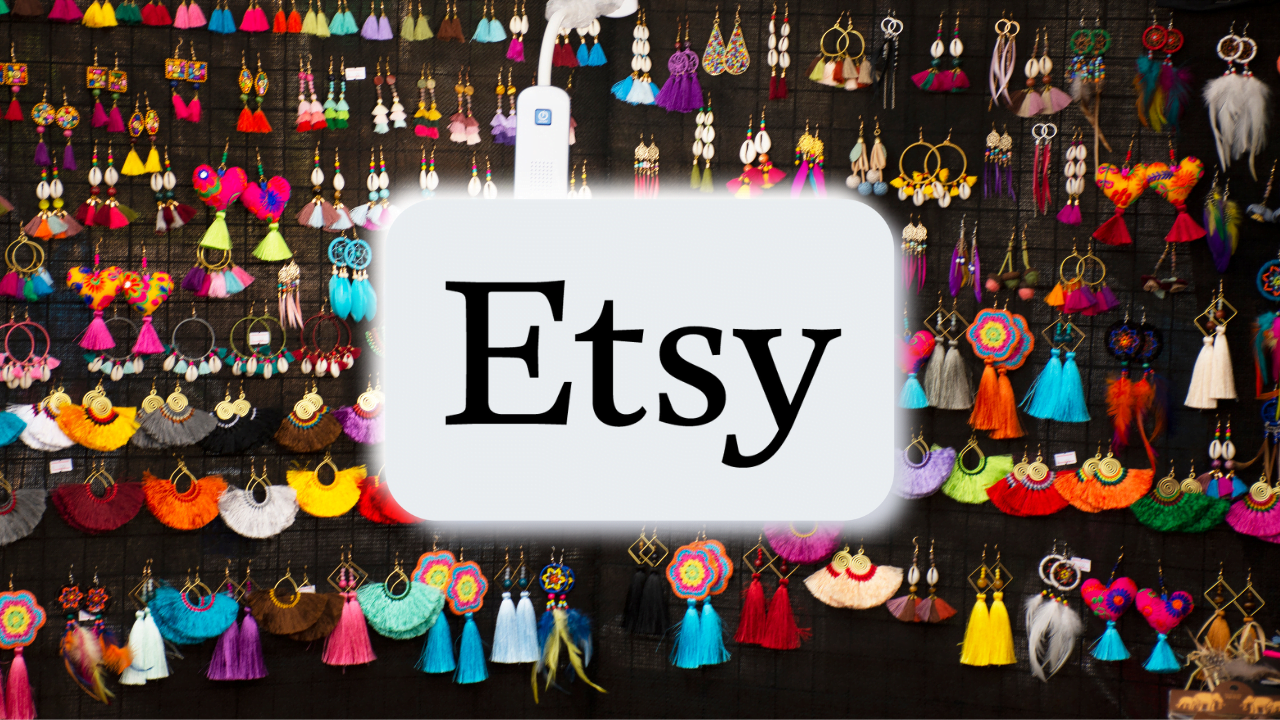Etsy is a distinguished online marketplace that primarily focuses on handmade, vintage, and craft supply products. Established in 2005, Etsy has cultivated a thriving community of entrepreneurs and small business owners dedicated to promoting their creative talents. For many individuals looking to convert their artistic hobbies into a sustainable income, becoming an Etsy seller represents an appealing opportunity. This platform is particularly suited for those who wish to sell unique products that showcase individuality and craftsmanship.
The appeal of Etsy lies in its specific niche. Unlike larger e-commerce platforms that cater to mass-produced goods, Etsy thrives on the uniqueness of each product. This distinctive positioning caters to a market of consumers who value authenticity, originality, and handcrafted items. As an Etsy seller, you can effectively reach a dedicated audience actively seeking products that tell a story or evoke a personal connection. This unique community creates an ideal environment for those looking to build a brand rooted in creativity and personal expression.
Moreover, Etsy provides various resources designed to assist sellers at every stage of their selling journey. From setting up a shop to marketing products, the platform offers tools and support specifically tailored for entrepreneurs. Many sellers report high levels of satisfaction in launching their businesses on Etsy, as it allows them to engage with customers who are genuinely interested in their craft. By embracing this platform, you have the opportunity to not only share your craft with a wider audience but also to establish a successful and fulfilling business. The journey of selling on Etsy can be enriching, allowing creative individuals to thrive in a dynamic marketplace.

Choosing Your Niche
Selecting the right niche is a crucial step for any aspiring Etsy seller seeking to make a living. A well-defined niche not only aligns with personal interests and skills, but it also serves as a foundation for a successful shop. To start the process, reflect on your hobbies, passions, and areas of expertise. This self-assessment allows you to identify potential products that resonate with you, enabling authentic storytelling that connects with customers.
Once you have a list of personal interests, it’s essential to explore market demand. Researching current trends on Etsy equips sellers with valuable insights into what consumers seek. Utilize Etsy’s search bar to identify popular keywords related to your product ideas. Additionally, consider using tools like eRank or Marmalead, which analyze data to help you understand search volume and competition. Aim to identify a balance between your enthusiasm for the product and its viability in the marketplace.
Analyzing competition is the next step in the niche selection process. Investigate similar Etsy sellers and their offerings. Take note of their product listings, pricing strategies, and customer feedback. This analysis not only helps ascertain saturation but also provides inspiration to differentiate your products. Look for gaps in the market where you can position your offerings effectively. A unique or finely curated collection often captures customer attention more than a generic range of products.
Finally, narrowing down your options is a key factor in choosing the most fulfilling and profitable niche. Engage in brainstorming sessions, listing pros and cons for each possible product type. Prioritizing niches that excite you while also meeting market needs will ultimately yield a more enduring and successful Etsy shop. By taking the time to thoughtfully select your niche, you can enhance your chances of thriving as an Etsy seller.
Setting Up Your Etsy Shop
Establishing an Etsy shop is an exciting yet strategic endeavor for anyone looking to sell handmade products, vintage finds, or craft supplies. The first essential step is to choose an appropriate shop name that reflects your brand identity and resonates with your target audience. This name is crucial, as it should be memorable and convey what potential customers can expect from your offerings. Ensuring that the name is not already in use is vital; checking Etsy’s name availability can help avoid any future complications.
Once your shop name is decided, you will proceed to set up your shop policies, which are crucial to your Etsy seller experience. Clearly outlining your policies on shipping, returns, and refunds helps build trust and sets expectations for customers. This transparency can significantly enhance buyer confidence and lead to repeat sales. Additionally, familiarizing yourself with Etsy’s fee structure is crucial. The platform charges listing fees, transaction fees, and payment processing fees, which can influence your pricing strategy and overall profitability.
Creating an appealing shop aesthetic is another important factor for success in selling on Etsy. This includes investing time in branding, such as designing a distinct logo and selecting cohesive colors that represent your product line. Similarly, high-quality photography is essential in showcasing your products effectively. Clear, well-lit images that capture your items from multiple angles can elevate the online shopping experience, making it more engaging for your customers. By ensuring your shop presents an attractive and professional appearance, you attract more potential buyers and encourage them to explore your offerings further.
Creating Quality Products
For an aspiring Etsy seller, the creation of high-quality products is paramount to building a successful shop. Quality not only attracts customers but also fosters trust and encourages repeat purchases. This begins with sourcing the right materials. It is advisable to opt for suppliers known for their reliable standards and high-grade materials, as this forms the foundation for any product being sold.
Once materials are procured, the actual crafting of the product should focus on attention to detail. For example, if you are creating handmade jewelry, each piece should be meticulously assembled, ensuring that it meets both aesthetic standards and functionality. Utilizing proper tools and techniques can greatly enhance the quality of the finished product. It is important for an Etsy seller to continually refine their skills, staying abreast of new methods and manufacturing processes that improve quality.
Consistency plays a crucial role in an Etsy shop’s reputation. Buyers often expect a certain standard with every order, and inconsistency can lead to dissatisfaction. Therefore, establishing a production workflow that maintains uniformity across products is essential. This may involve batch production systems or guidelines for craft techniques to ensure every product meets the desired quality level.
Moreover, before launching a new product, testing is key. Putting your creations through a trial phase can be beneficial; this could include giving samples to friends or family, collecting their insight, or even conducting surveys with potential customers. Gathering feedback allows an Etsy seller to make necessary adjustments, ensuring the product resonates well with the target audience. By prioritizing quality, consistency, and customer feedback, sellers can significantly improve their chances of success in a competitive marketplace.
Optimizing Your Listings for SEO
When venturing into the world of being an Etsy seller, understanding the importance of Search Engine Optimization (SEO) for your listings is vital. SEO is the practice of enhancing your online visibility to attract more visitors, ultimately increasing sales. For Etsy sellers, this involves strategically employing keywords, compelling product descriptions, and relevant tags to connect with potential buyers searching for products like yours.
To effectively optimize your Etsy listings, the first step is to conduct keyword research. Identify the phrases and terms that potential customers are likely to use when searching for products. For instance, if your product is a handmade necklace, relevant keywords might include “handcrafted jewelry,” “unique necklaces,” or “custom jewelry.” Integrating these terms naturally throughout your listing can significantly improve its chances of appearing in search results.
Writing compelling product descriptions is another crucial aspect of optimizing your listings for SEO. Descriptions should not only include primary keywords but also describe the features, benefits, and unique selling points of your products. This not only provides valuable information to potential buyers but also enhances the likelihood of your listing ranking higher in search results. Aim to tell a story with your product, making sure to depict its uniqueness and the emotions it evokes.
Selecting the right tags is equally important for an Etsy seller. Tags help categorize your produkt and make your listings discoverable in search queries. You can add up to 13 tags per listing, so ensure these include your main keywords and synonyms. Think about the diverse ways customers might describe your item. Using a combination of specific and broad tags can optimize your visibility across various search terms.
By effectively using these SEO techniques, Etsy sellers can significantly enhance their listing visibility, attract more potential buyers, and ultimately boost sales in this competitive market.
Marketing Your Etsy Shop
Effectively marketing your Etsy shop is crucial to driving traffic and converting visitors into customers. As an Etsy seller, leveraging various marketing strategies will significantly enhance your shop’s visibility. One of the most impactful methods is utilizing social media platforms. Create engaging content that showcases your products while fostering a community around your brand. Platforms like Instagram and Pinterest are particularly beneficial for visually appealing products, allowing sellers to reach a broader audience. Regularly posting updates, promotions, and behind-the-scenes content can foster a stronger connection with potential buyers.
Email marketing is another potent tool for promoting your Etsy shop. Building an email list allows you to communicate directly with your customers, keeping them informed about new products, sales, and special offers. Offering a discount or free shipping for newsletter sign-ups can incentivize visitors to subscribe. This personal touch can help increase sales, as repeat customers are often more likely to return when they feel valued and informed.
Collaborating with influencers is an additional method to expand your reach. Identifying influencers who align with your brand values can create authentic and engaging content that showcases your products to their followers. This strategy can expose your shop to an entirely new customer base, potentially leading to increased sales and brand awareness.
Moreover, utilizing Etsy’s advertising tools plays a vital role in strategically marketing your products. By promoting listings through Etsy ads, sellers can enhance visibility on the platform and attract potential buyers actively searching for items similar to their produckts. Additionally, utilizing analytics tools provided by Etsy can help sellers understand their audience better, adapt their marketing strategies, and improve product listings based on performance metrics.
In conclusion, combining social media, email marketing, influencer collaborations, and using Etsy’s advertising tools will create a comprehensive marketing approach. By implementing these strategies, sellers can maximize their opportunities for success in the competitive Etsy marketplace.
Customer Service and Engagement
For an Etsy seller, providing exceptional customer service is vital for building long-term relationships with buyers and ensuring repeat purchases. The nature of selling on platforms like Etsy depends heavily on the interactions between sellers and customers; therefore, engaging effectively with buyers should be a priority for any seller aiming to grow their business.
Clear and timely communication forms the foundation of good customer service. When a customer reaches out with inquiries about a product or a concern regarding their order, responding promptly can significantly enhance their overall experience. Etsy sellers should strive to reply within 24 hours to foster trust and demonstrate that their customers’ needs are valued. In doing so, sellers may also alleviate concerns regarding shipping times, product details, or other relevant aspects that may affect the purchasing decision.
Handling complaints or negative experiences effectively is equally critical. When a buyer encounters an issue, whether it be a delayed shipment or a product that did not meet their expectations, how the seller responds can dictate the outcome. A conciliatory approach, focusing on resolution rather than conflict, can often lead to a satisfactory conclusion. Additionally, offering solutions such as refunds or replacements can not only resolve the situation but may also encourage the buyer to share a positive review, thus improving the seller’s reputation.
Reviews and ratings represent fundamental elements of success for any Etsy seller. They serve as endorsements from prior buyers, bolstering a seller’s credibility within the marketplace. Encouraging satisfied customers to leave feedback, particularly after positive interactions, can significantly enhance a seller’s profile and create an inviting atmosphere for prospective buyers. Collectively, these practices contribute towards a more engaging and supportive selling environment on Etsy, ultimately translating to increased sales and business growth.
Growing Your Business
Scaling an Etsy business requires a multifaceted approach that focuses on diversifying product lines, exploring wholesale opportunities, and considering additional sales channels. As an Etsy seller, it is vital to continuously adapt to market demands to sustain growth and profitability. One effective strategy involves expanding your product offerings to attract a broader clientele. By introducing complementary products or variations of existing items, you can appeal to different customer segments, thus enhancing your overall sales potential.
Additionally, engaging with wholesale opportunities presents an excellent avenue for growth. Many successful Etsy sellers have found that partnering with local boutiques or online retailers allows them to reach new audiences. To embark on this route, begin by identifying retailers that align with your brand and reaching out with a well-crafted proposal. Enabling wholesale options in your Etsy shop not only diversifies your income streams but also increases brand visibility across various platforms.
Moreover, transitioning to other sales channels can further amplify your success as an Etsy seller. While Etsy remains a fantastic platform for handmade and vintage products, exploring avenues such as personal e-commerce websites or other marketplaces can help minimize reliance on a single source of income. It’s crucial to tailor your marketing strategies accordingly to ensure brand consistency across platforms.
To effectively navigate the challenges of growing your business, continuous learning remains essential. Keep abreast of market trends, customer preferences, and advancements in e-commerce. Utilize online resources, join seller communities, and participate in webinars to refine your skills. By staying informed and adaptable, you will position yourself to seize emerging opportunities that come your way, thereby fostering sustainable growth for your Etsy venture. In essence, the key to a thriving Etsy business lies in diversification, collaboration, and ongoing education.
Conclusion: Sustaining Success on Etsy
As an Etsy seller, navigating the landscape of online selling requires a blend of creativity, adaptability, and persistence. Reaching success on Etsy is not merely about launching a product; it is about envisioning the journey ahead. There are essential strategies and mindsets that can greatly influence your ability to sustain success over the long term.
Firstly, it is crucial to maintain an evolving approach towards your product offerings. Trends shift and customers’ tastes change, so regularly updating your shop with fresh and innovative products can keep your brand relevant. Engaging with customer feedback and analyzing sales data can provide invaluable insights that guide your product development and marketing strategies.
Secondly, fostering connections within the Etsy community can significantly enhance your experience as a seller. Networking with fellow Etsy sellers can open doors to collaborative opportunities and knowledge-sharing. Consider joining forums, participating in local artisan markets, or attending Etsy-related workshops to stay immersed and motivated. Connecting with others who share a common goal can inspire you to overcome challenges and celebrate successes together.
Staying motivated through the ups and downs of selling on Etsy is vital. It is important to set realistic goals and celebrate even small milestones to keep your spirits high. Surround yourself with a support system, whether it is family, friends, or fellow Etsy sellers, who can encourage you during difficult times. Remember, every established Etsy seller has faced challenges; it is the ability to persevere and innovate that sets them apart.
Ultimately, crafting a successful and enduring presence on Etsy demands dedication and a willingness to adapt. By viewing your Etsy journey as a long-term endeavor, you can unlock new opportunities and achieve the satisfaction of running your shop effectively.






